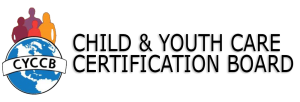ACYCP COMPLETES BENCHMARK ISSUES AND SALARY/BENEFITS SURVEY
Christina L. Scanlon, Frank Eckles, Laura Klemm, Dale Curry,
Allison M. Belmont, and Keri A. Plevniak
EXECUTIVE SUMMARY
ACYCP conducted an ISSUES and SALARY/BENEFITS SURVEY October through December, 2020. The study was conducted to inform public awareness efforts, set a baseline for future research on changes in the field, and focus ACYCP support to its individual and organizational members. Study participants were asked to answer a set of demographical questions, identify important issues faced by both youth and CYC practitioners, and report basic information on the salary and benefits they receive from employment.
The study was distributed electronically using a snowball research method where recipients were asked to redistribute the study to potential interested contacts. Direct emails were sent to all ACYCP individual and organizational members;, practitioners certified by the Child and Youth Care Certification Board (CYCCB);, CYCCB advisors and Board members; members of FICE INTERNATIONAL; Indiana Journey Fellows and Indiana Youth Services Association (IYSA) members; all CYCCB certified practitioners, CYCCB state and provincial partners (Ontario, Nova Scotia, Newfoundland, Ohio, Texas, Wisconsin, Indiana, National Safe Place Network); listings in the Academy for Competent Youth Work’s 10K contact database; and Association for Children’s Residential Centers members. Because the snowball method was used, it is not known how many total contacts received the study.
The following information provides preliminary findings of the survey. Work is currently underway to further analyze the data and report additional findings.
WHO PARTICIPATED
A total of 947 people provided survey information. The study was distributed internationally but is primarily composed of responses from the US (78.6%) and Canada (21.2%). An additional 0.4% of the responses came from other countries. The response group was composed of women (79.6%), men (19.3%), and other genders (0.06%). Ages of respondents in the study ranged from 18 to over 66 with an average age of 40.
PRACTICE SETTING
Respondents were asked, “In which practice setting do you primarily work?”
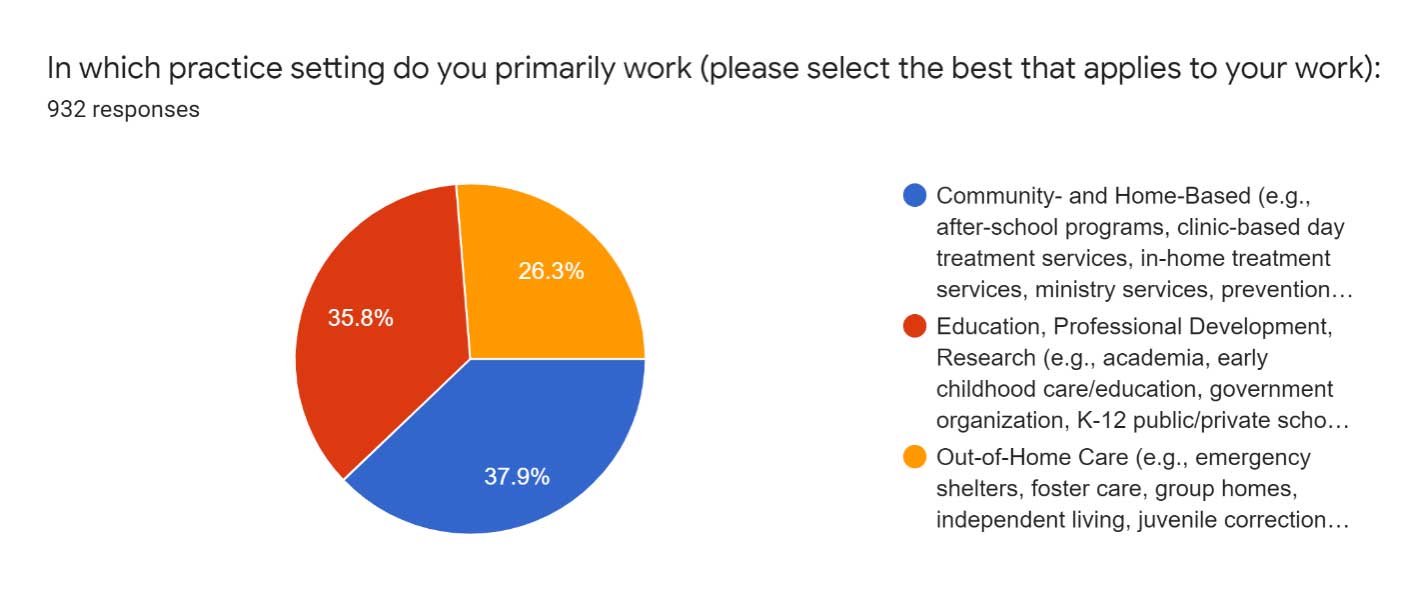
Community- and Home-Based (37.9%) (e.g., after-school programs, clinic-based day treatment services, in-home treatment services, ministry services, prevention/intervention programs, probation services, recreational programs, street outreach, etc.)
Education, Professional Development, Research (35.8%) (e.g., academia, early childhood care/education, government organization, K-12 public/private school, professional development organization, research, training, etc.)
Out-of-Home Care (26.3%) (e.g., emergency shelters, foster care, group homes, independent living, juvenile corrections, medical hospitals/clinics, psychiatric hospital/clinics, residential treatment, transitional living, etc.)
The relatively even split across practice settings in the data collected demonstrates a wide sampling across the varied fields of practice within the child and youth care field.
HIGHEST EDUCATION
The education level of the practitioners completing the study was as outlined in the chart below with over 75% of the respondents having attained at least Baccalaureate or Masters Degrees.
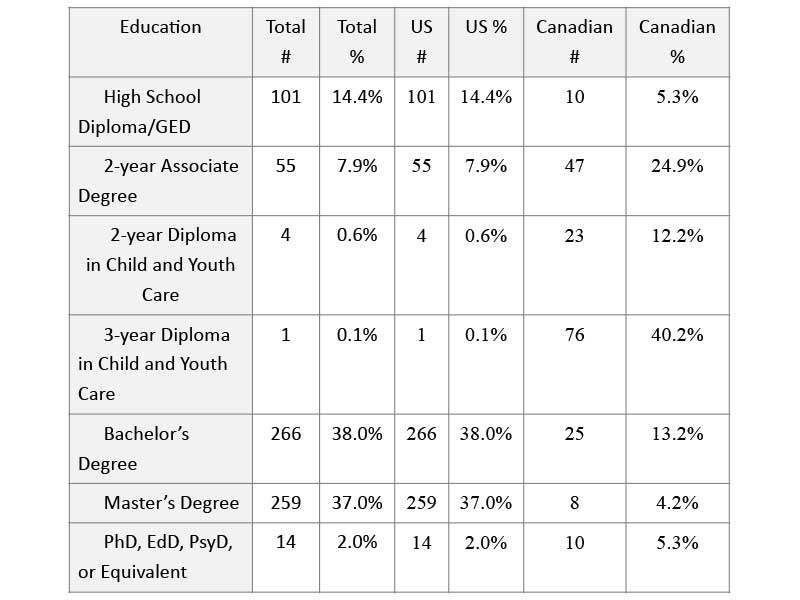
It is Interesting to note that in the US more practitioners had Baccalaureate degrees while in Canada it was more prevalent for practitioners to have completed 2-3 year diploma programs. This may be due to differences in the education system and between oversight and regulation requirements.
CYC CERTIFICATION
Respondents were asked to report the CYC Certification Level they had attained. Approximately 40% of respondents were certified at one of the three certification levels.
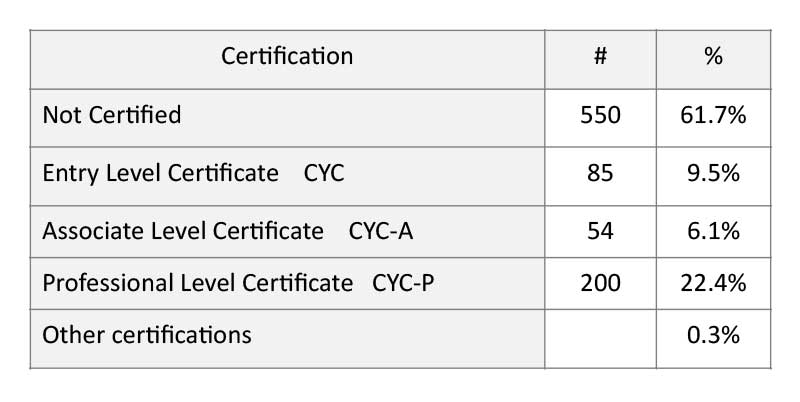
Respondents reported that 16.6% were paid more because they are certified (83.4% reported not being paid more). Based on the data, we found that people certified at the CYC-P level tended to make more money than people who are not certified and people who are certified at Entry or Associate levels. The Entry and Associate Certification Levels are not available in Canada.
ISSUES FACING CHILDREN AND YOUTH
Respondents were asked, “What are the top three most concerning issues facing children and youth?” and “What issue is MOST IMPORTANT to you as a CYC professional?”
In the charts below, a rating of “1” is Most Concerning or Most Important while “15” is considered Least Concerning or Least Important.
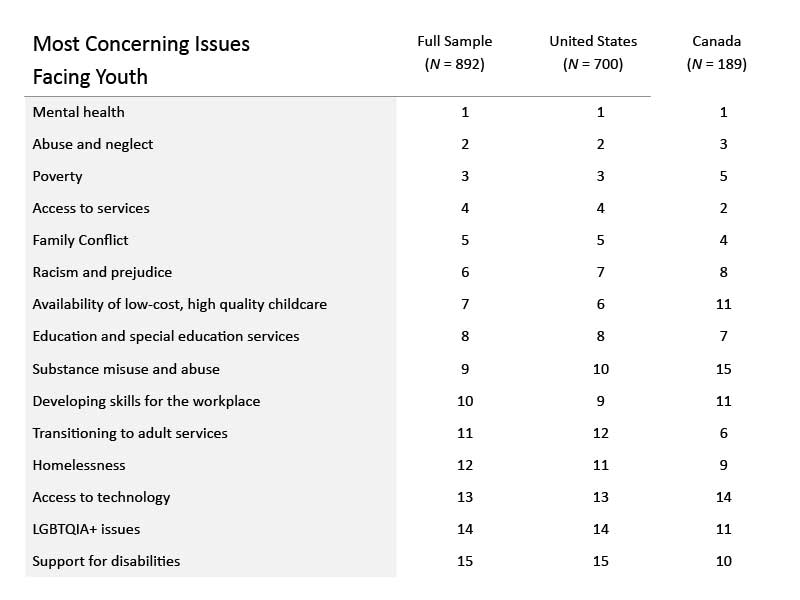
Similarities in the responses between Canada and US reflect pervasiveness of some issues across North America. At the top of the chart there is much congruence between Canada and the US. The bottom ratings reflect bigger differences, which may be effects of societal or service system differences.
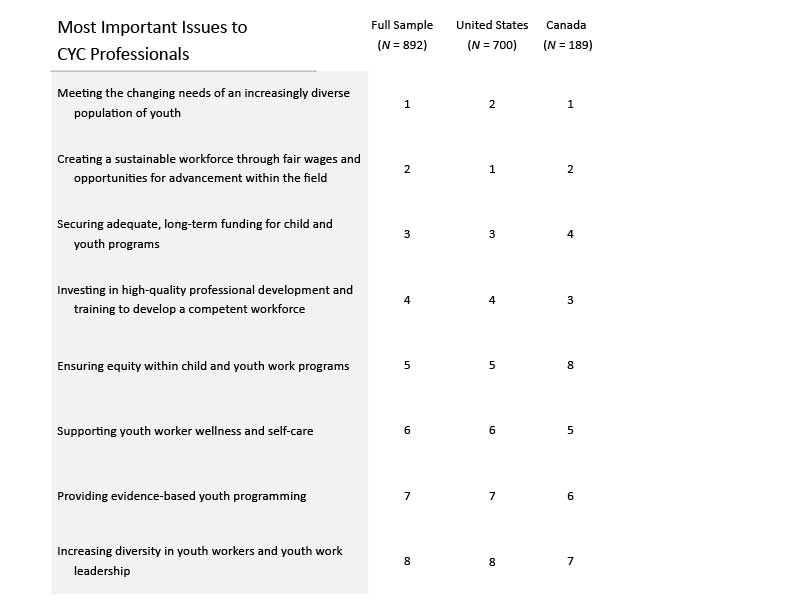
Similarities in the responses between Canada and US reflect pervasiveness of most issues across North America. With the exception of ‘ensuring equity within child and youth work programs’, all of the ratings fall in similar priority rankings although in slightly different order. These ratings are likely due to similar challenges faced by the workforces in both countries that relate to the status of youth in society and working conditions within the respective service systems.
SALARY AND BENEFITS
Are you employed on a part-time or full-time basis?
Most respondents work on a full-time basis (81.6%) with the remainder employed on a part-time basis (15.2%), or as volunteers or in other employment categories (3.2%).
How much did you earn in 2019?
On average, Canadians reported higher salaries than US child and youth care practitioners. In the US, the most commonly reported income for full-time practitioners was in the
$35,001 - $50,0000 range. In Canada, the most commonly reported income for full-time practitioners was in the $50,000 - $75,000 range. Future reports will explore these differences in more detail.
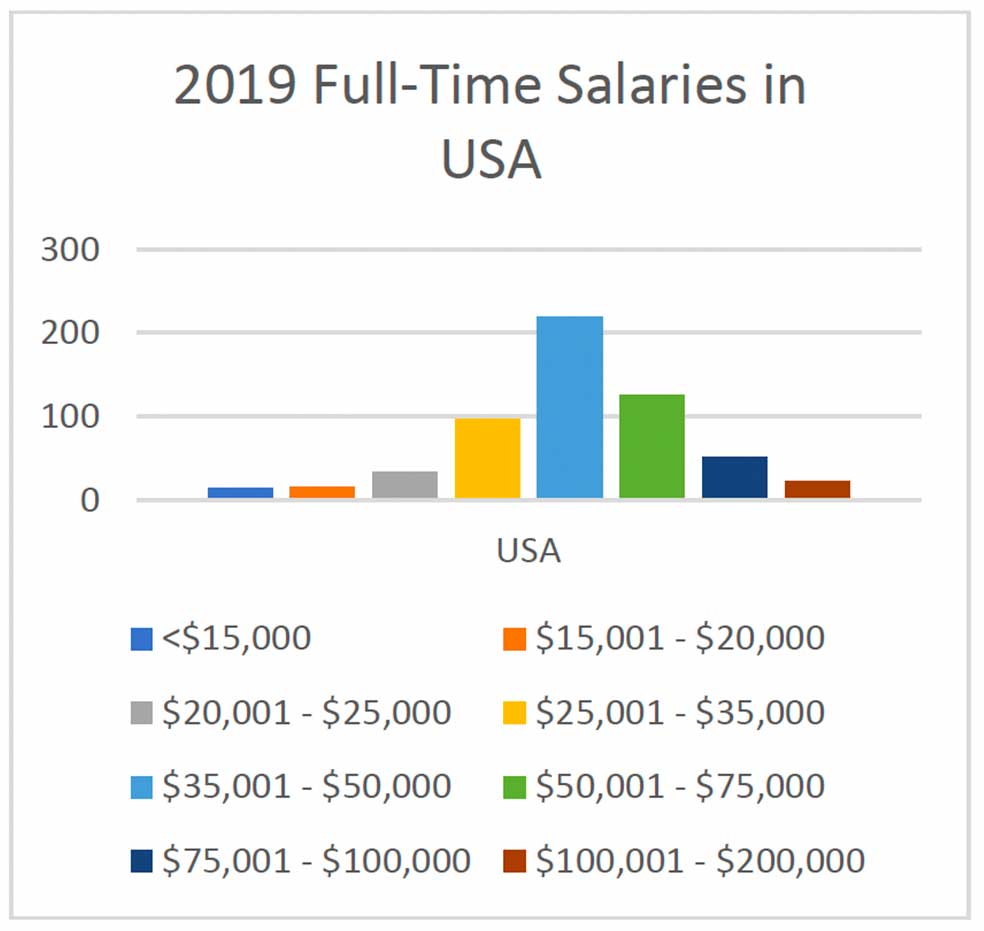
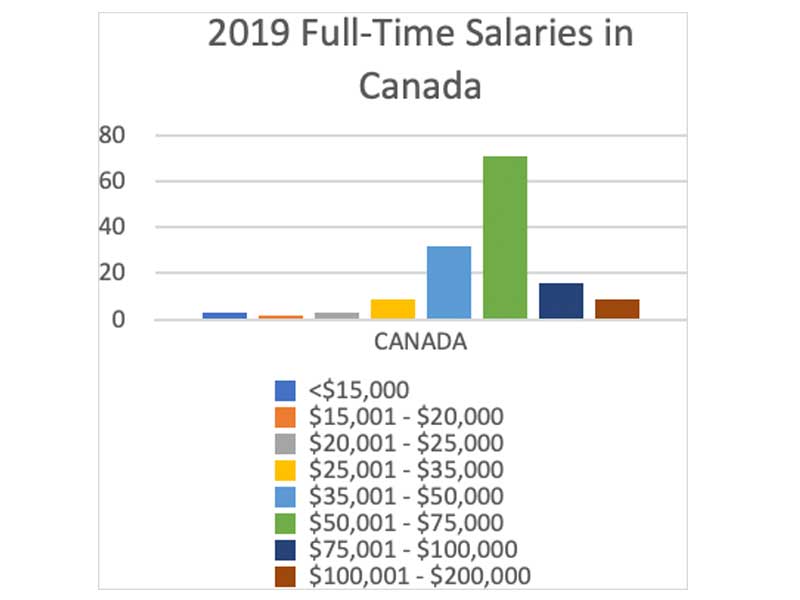
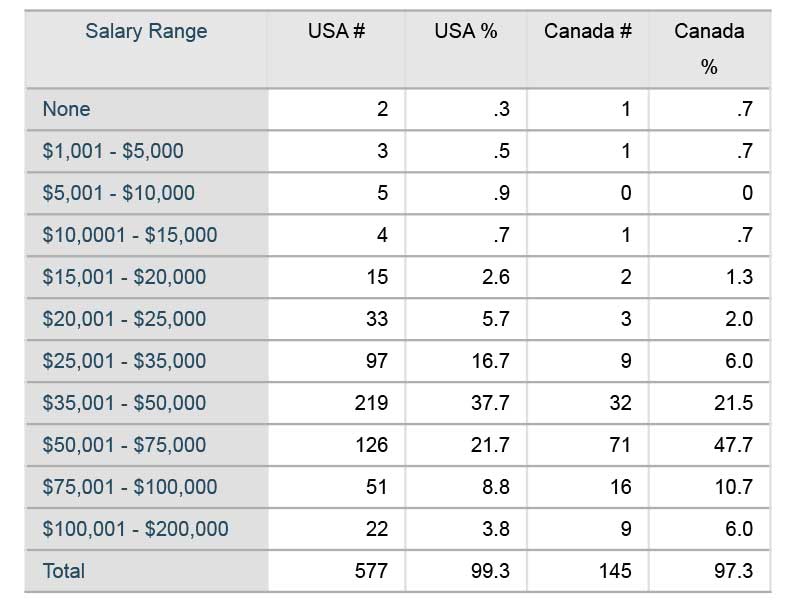
Do you receive any bonuses, awards, incentives, or additional compensation as a condition of your employment?
Overall, a wide variety of benefits and incentives were identified by the respondents. Some of the most frequently cited include medical, dental, and vision insurance as well as holiday, vacation, and sick leave. Other commonly mentioned benefits were free parking, retirement accounts, and workers’ compensation insurance. Less frequently, respondents also listed a number of other benefits such as travel allowances, cell phone reimbursement and performance-based raises.
General Benefits: Vacation and holiday leave, sick or personal time off, and overtime.
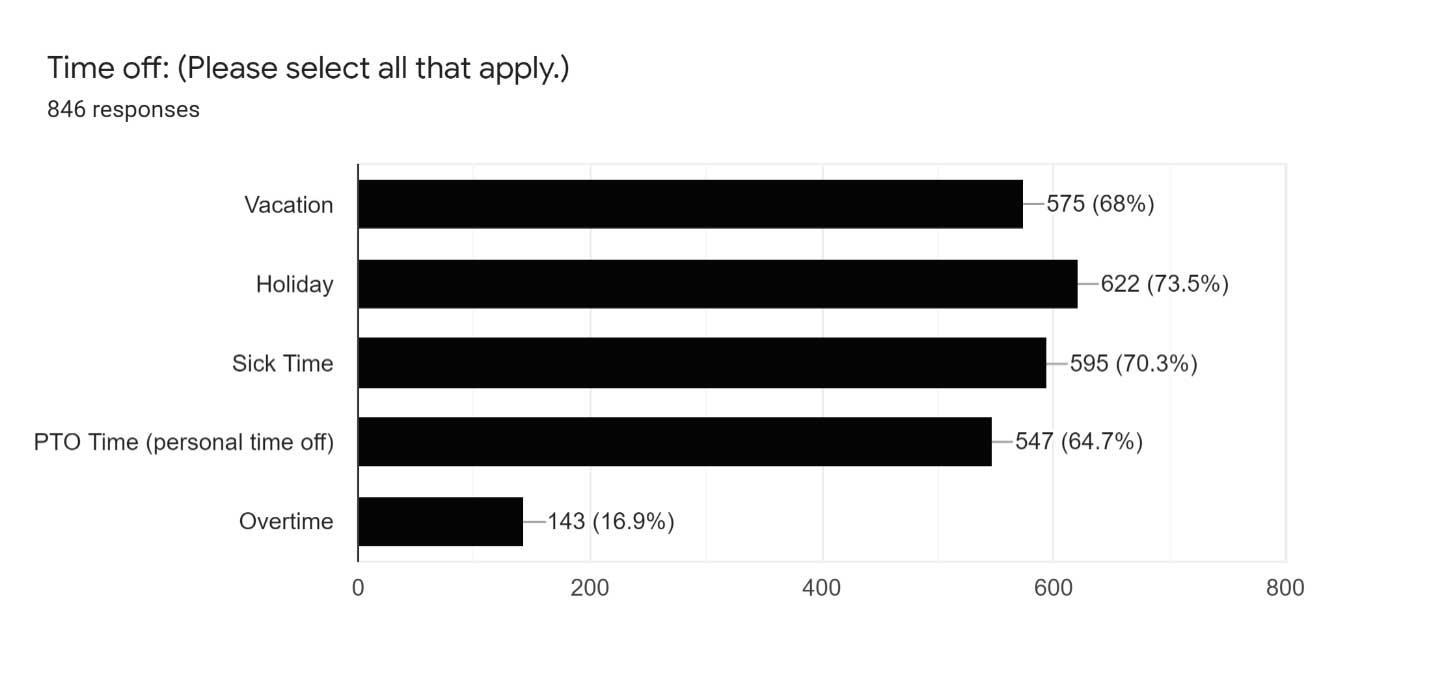
Health and Wellness Benefits: Family and Medical Leave, health club membership, wellness programs, medical, disability, vision, mental health, dental, and prescription drug insurance.
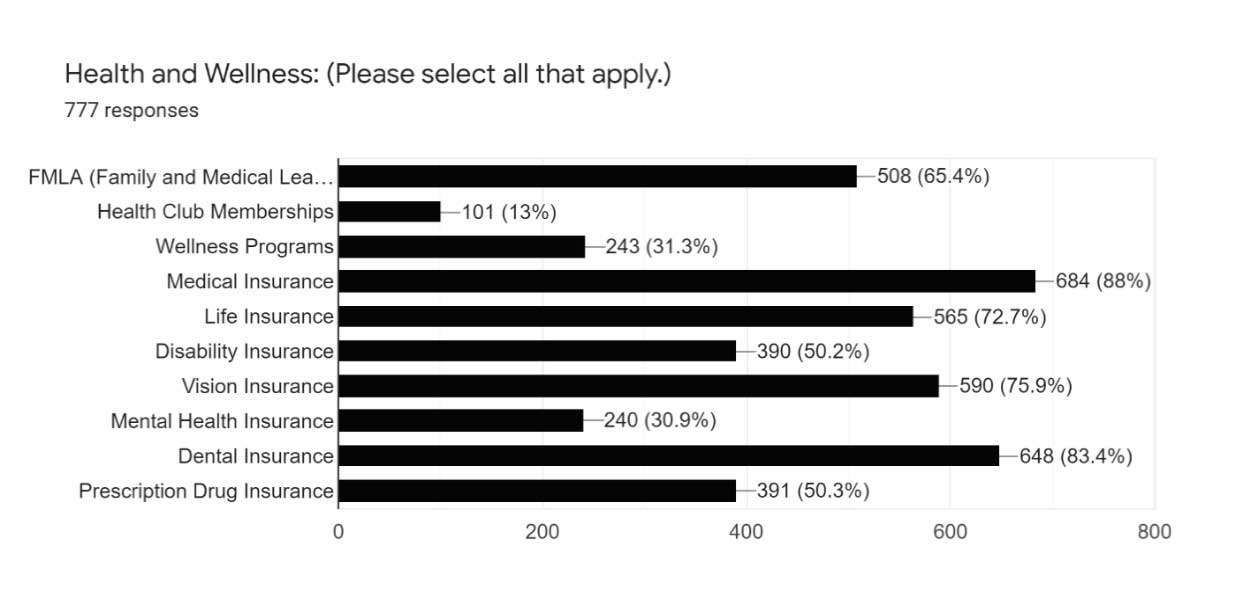
Other Benefits: Extended leave/sabbatical, housing, free meals while working, retirement/financial planning, retirement account, work from home support, severance pay, business expense reimbursement, relocation support, worker’s compensation insurance, child care support, free parking, school tuition reimbursement, and student loan repayment.
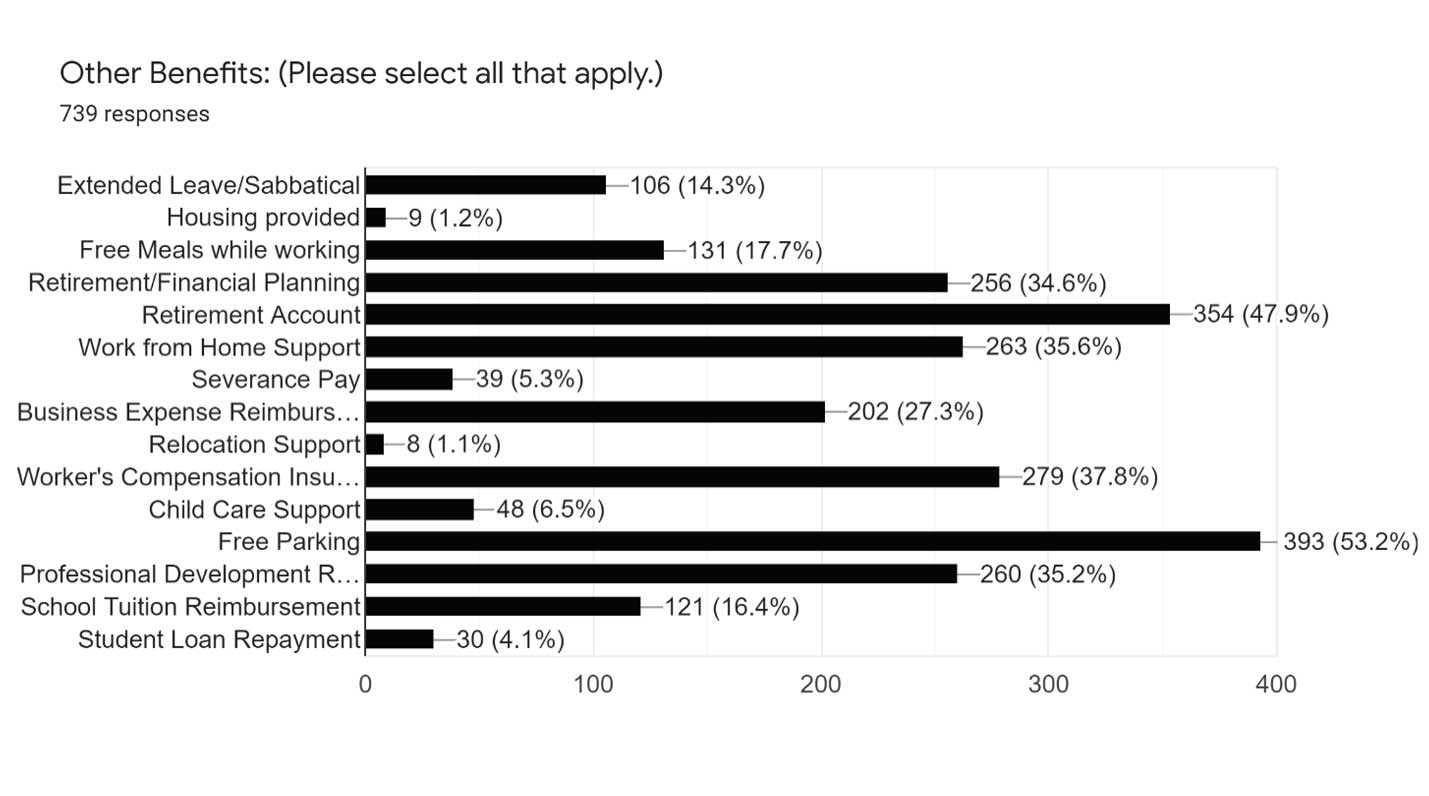
CONCLUSION
ACYCP is using this survey to establish a benchmark upon which to measure change over time. Planning is underway to replicate the study in the near future. This is a preliminary report. Additional analysis is underway which will be reported in subsequent publications.
These preliminary findings provide valuable information that can be used as a basis for future inquiry. For example, which of the wide variety of benefits identified are most effective in promoting effective practitioner performance and reducing turnover within the workforce? Although retirement accounts were frequently cited as a benefit, they were not mentioned by more than half of the respondents. Do organizations that provide quality retirement programs promote long-term careers and reduce turnover? Does a long-term career in child and youth care place an individual at risk for an uncertain retirement due to relatively low salary and fewer retirement programs? Since certification at the professional level is associated with higher salary, does professional level certification promote practitioner longevity in the field? Since there is a paucity of research pertaining specifically to the child and youth care workforce, the findings from this survey add to our knowledge but also prompt important questions for further investigation.
